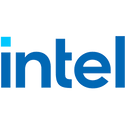Friday, July 25th 2025

Intel's Foundry Business Hinges on 14A Node Success
In response to a question about Intel's foundry strategy from Timothy Curry—a UBS analyst—Intel CEO Lip-Bu Tan mentioned that although the company has a team that is laser focused on developing its 14A node, the node hinges on customer commitment at the moment. This obviously includes Intel itself, but also its potential third party customers and if there will be enough business for Intel to make money on the upcoming node. Lip-Bu Tan said that it "has to meet my requirement in terms of performance and yield. It's a lot of responsibility to be serving our customers, make sure that we can deliver the result—consistent, reliable result—to them, so that their revenue can depend on us."
It's clear that Intel's new CEO is very focused on revenue for the company and its customers, which makes sense considering the current situation at Intel. However, the question is if TSMC will be able to handle potential future business from Intel, as they will most likely be the only viable option for Intel, if the company decides that the investment into its 14A node doesn't make financial sense. The company has already announced that it will "further slow the pace of construction in Ohio to ensure spending is aligned with market demand" while cancelling its announced fab in Germany altogether. Admittedly the German fab was never intended to be a leading edge fab, but with so many cancelled projects, one has to wonder where Lip-Bu Tan will take the company and without third party customers, it sounds like Intel's foundry business might soon give up on trying to be a cutting edge foundry. For now, a lot hinges on its current 18A node and if it can attract enough third party interest for it.
Source:
Q2 2025 Intel Corporation Earnings Conference Call
It's clear that Intel's new CEO is very focused on revenue for the company and its customers, which makes sense considering the current situation at Intel. However, the question is if TSMC will be able to handle potential future business from Intel, as they will most likely be the only viable option for Intel, if the company decides that the investment into its 14A node doesn't make financial sense. The company has already announced that it will "further slow the pace of construction in Ohio to ensure spending is aligned with market demand" while cancelling its announced fab in Germany altogether. Admittedly the German fab was never intended to be a leading edge fab, but with so many cancelled projects, one has to wonder where Lip-Bu Tan will take the company and without third party customers, it sounds like Intel's foundry business might soon give up on trying to be a cutting edge foundry. For now, a lot hinges on its current 18A node and if it can attract enough third party interest for it.

54 Comments on Intel's Foundry Business Hinges on 14A Node Success
Will it actually help who knows but having only 1 player is never a good thing.
Can't say I miss this guy being in charge of AMD, although he wasn't nearly as bad as a couple of his predecessors.
That still sucks for us though if only one silicon maker has all the top companies locked up and can just set the price to whatever makes the bottom line look the best.
Remember, Intel can't sell of it's gem, the x86 license, without AMD's permission. And without foundries, Intel is just another fabless designer that can probably only be sold without the x86 going with it.
TSMC is obviously investing in a lot of other things as well, to make sure they can continue to produce the kind of final chips that their customers need/want and this isn't free either, but is often not taken into account when the cost per wafer is being discussed. TSMC re-invests a lot back into the company to be able to stay on the cutting edge, which is getting silly expensive today and this is also why it seems like Lip-Bu Tan wants to see that Intel is getting something back on its investments in cutting edge nodes, since the foundry part is technically a secondary business for Intel.
@SRB151 x86 is actually quite worthless today, since almost everything has moved to x64, which was an AMD design from the beginning, even though Intel has added its own bits to it since then. In a modern operating system, very very little still needs anything legacy x86. That doesn't mean Intel doesn't have some useful patents still, but x86 ain't it.
Now even if there was ample silicon would gamers still get screwed probably but at least that won't be a factor lol.
I'm not blaming TSMC in the sense that we have terrible pricing due to them they should charge whatever they feel is right for a specific product node but just having nobody else even if they don't raise prices significantly would still be bad for consumers because distributors and scalpers will screw us instead lol.
Monopolies are how we got into this mess to begin with.
"If you wanna be a top manager, you can either lead, follow or get the f*ck out of the way"
I sincerely hope that Tan da Man is the former, cause otherwise, Intel will surely die a painful death, and as others have already said, having only 1 chip maker will be even MORE painful, especially for us little people who just want affordable chips that work ootb :)
In other words, only Intel and AMD can make x64 chips, and the terms of the cross license that apply to a sale of the license still apply as well.
But I've had no issues with AMD cpu's running out of the box.
One of the chief complaints about that OS is that it was unstable (largely a byproduct of VXD being dropped and almost every WDM device driver being written for Windows 98 SE instead) and that MS-DOS mode was removed, Windows XP was still some time away, and most machines that were in operation for these markets were barely powerful enough to run NT 4, something completely counter-intuitive and very expensive for the average consumer at the time. Dropping an all-new, pure 64-bit ISA in that market was never going to work. Heck, unless you're Apple with its tremendous amount of vertical integration and have zero regard for backwards compatibility, it's a difficult proposition today. With modern compilers and advanced software emulation, I don't believe Itanium would have flopped anywhere near as hard, especially if it could pull its weight in benchmarks and priced well.
x86's patent time is slowly ticking, I believe that most essential patents to make an AMD Clawhammer-compatible (1st gen Athlon 64) should be just about expiring or expired very recently, unfortunately Google is very uncooperative and researching that turns out to some of my own posts on this forum about this subject... it's just an educated guess based on patents lasting between 17 to 20 years.
Defence is always behind the curve when it comes to chips and they're most likely happy with chips from a few years ago.
It was said that Pat bet intel company on 18A. Seems like there will be very little external customers to 18A.
LBT winds down the investment to foundries as this is too dangerous and too coslty without any guarantees it will bring revenues, while keeping possibilities to expand in case customers are coming in.
Looks like a reasonable and more secured strategy to me.
made 40% profit with intel share this year (buying when low - 18$ and selling at around 24$ several time this year as intel keep bouncing).
It might apply to the basic instruction set, but it doesn't apply to the entire architecture from either company.
Intel even tried to make this:
www.intel.com/content/www/us/en/developer/articles/technical/envisioning-future-simplified-architecture.html
They also appear to claim they invented x64 on that page, which is a lie.
You forgot about VIA, they still have a license via Winchip/Cyrix, even though Intel bought most of Centaur a couple of years ago. That license is now being used by Zhaoxin, even though they're years behind due to the lack of investment by VIA.
Then you have Vortex86 that also has an x86 license, but not an x64 license.
So not, it's not only Intel and AMD.New CEO, new rules.